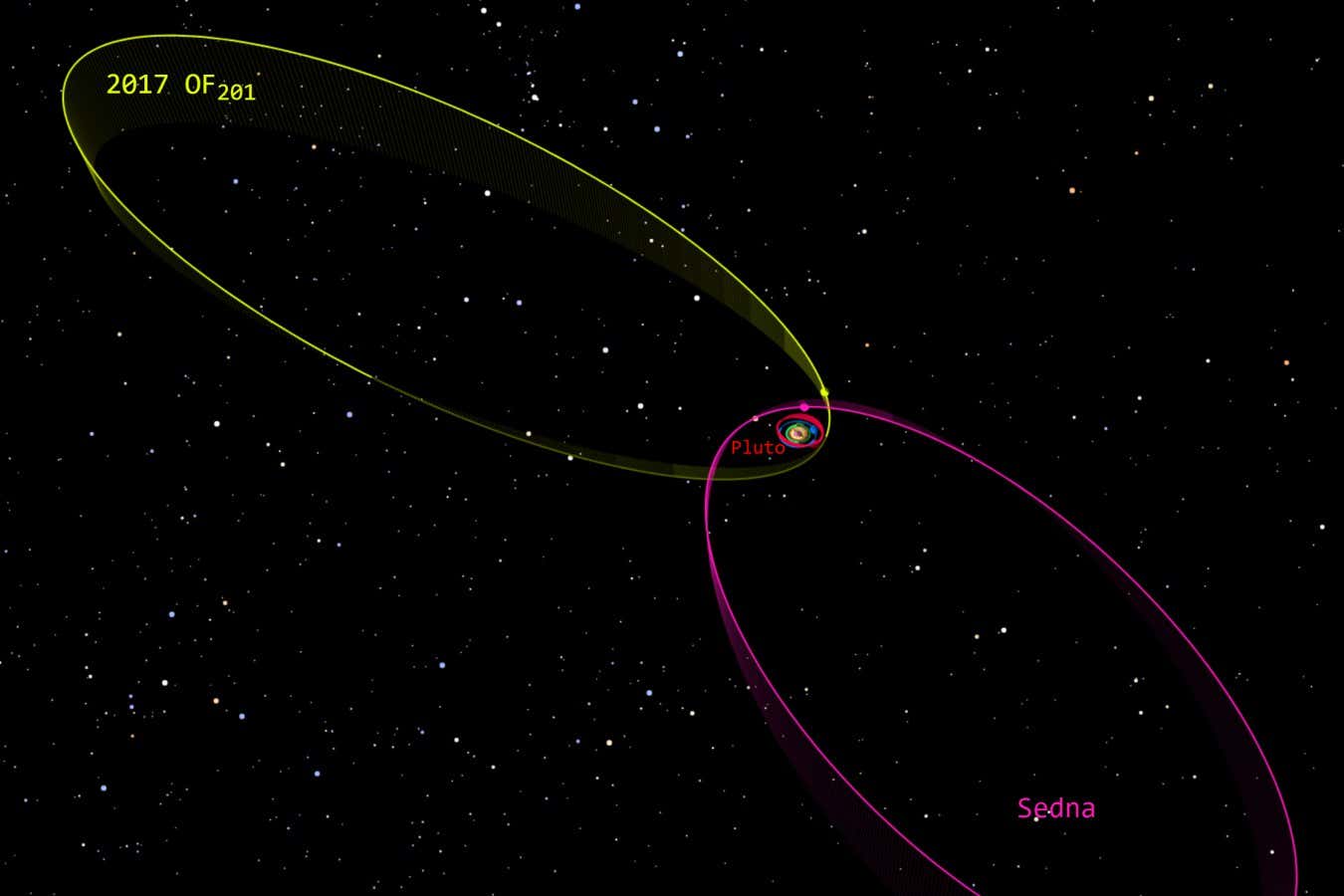
The orbits of a possible dwarf planet called 2017 of 2017 and the planet Dwarf Sedna
Tony Dunn
A possible dwarf planet has been discovered in the outer sections of our solar system, orbiting beyond Neptune. His presence there challenges the existence of a hypothetical body known as Planet 9 or Planet X.
Sihao Cheng, at the Institute of Advanced Studies in Princeton, New Jersey, and his colleagues detected for the first time the object, the known axis of the 2017 Axis of 2017, as a brilliant point in a database of astronomical images of the Victor M. White Telescope in Chile.
2017 of 2017 is approximately 700 kilometers wide, large enough to qualify as a dwarf planet as Pluto, which has a diameter approximately three times larger. The object is currently at approximately 90.5 astronomical units (AU), or approximately 90 times further from the earth than the sun.
Because the 2017 average orbit of 2017 around the sun is greater than that of Neptune, it is what is known as a trans-neptunian object (TNO). It passes through the Kuiper belt, an album of icy objects in the external solar system beyond the orbit of Neptune.
The researchers reviewed 19 observations, tasks in seven years by the Canada France Hawaii telescope, to determine that 2017 of 2017 reaches the sun, its perihelio, is 44.5 Au, which is similar to Pluto’s orbit. The farthest obtained from the sun is 1600 au, outside the solar system.
This distant orbit can be the result of an encounter with a giant planet, which expelled the candidate dwarf planet from the Solar System, the researchers say.
“It’s a really great discovery,” says Kevin Napier at Michigan University. The object would come so far from the solar system that it could interact with other stars in the galaxy as strongly as interact with some of the planets in our solar system, he says.
The orbits of many extreme tnos seem to be grouped into a specific orientation. This has been interpreted as evidence that the solar system contains a ninth hidden planet in the Oort cloud, a fixed cloud of icy rocks that surround the solar system. The idea is that the severity of the planet 9 pushes the TNos to their specific orbits.
But the 2017 orbit of 2017 or she fits this pattern. “This object is definitely an atypical case for the observed group,” says Eritas Yang, a team member, at Princeton University.
Cheng and his colleagues also modeled simulations of the orbit of the object, and how it could be with planet 9. “In the planet X, the object is expelled after a couple of hundreds of millions of years, and without planet X, Napier remains.” Certainly, this is not evidence in favor of planet 9 “.
But until there is more data, the case is not closed, says Cheng. “I hope Planet 9 still exists, because that will be more interesting.”
The candidate dwarf planet takes approximately 25,000 years to complete an orbit, which means spends only around 1 percent or the time close enough of the Earth to detect it. “These things are really difficult to find because they are weak, and their orbits are so long and thin that you can only see them when they are really close to the sun, and immediately they are directly directed and are invisible.
That means there could be hundreds of such objects out there. The Vera C. Rubin Observatory, which will connect online at the end of this year, will be deeper in space and enhanced many more objects like this, which should be more about them, and if the planet 9 really exists.
Topics:



